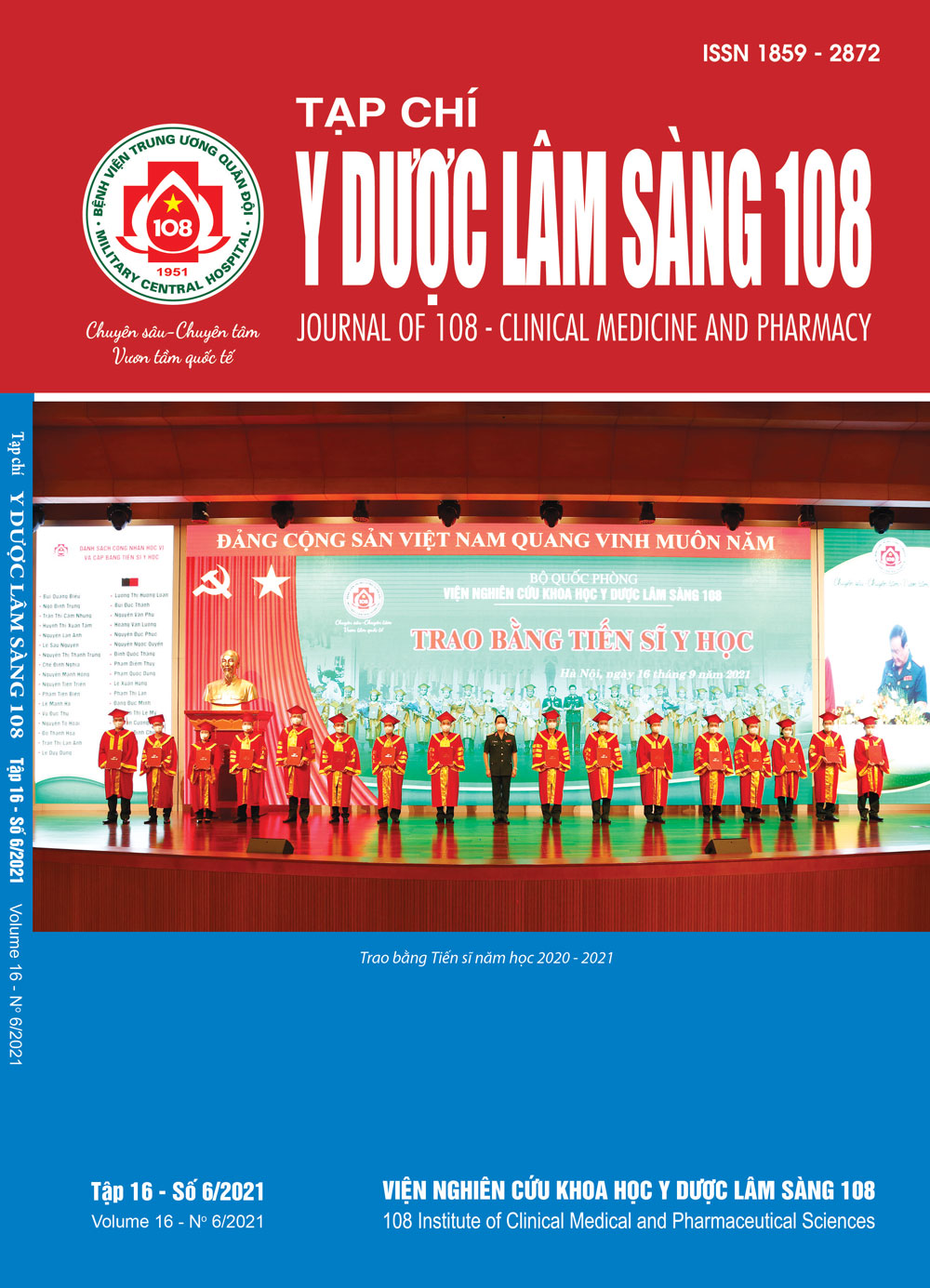Research of Epstein-Barr virus (EBV) in lichen sclerosus
Main Article Content
Abstract
Objective: To determine the prevalence of Epstein-Barr virus (EBV) infection and its clinical relevance. Subject and method: 52 lichen sclerosus (LS) patients, 48 women and four men, 34 patients over 30 years old, severe level 17 patients (32.69%), moderate level 32 patients (61.54%), mild level 3 patients (5.77%) were treated at the National Hospital of Dermatology and Venereology and Bach Mai Hospital from 1/2016 to 12/2018. Result: EBV infection rate accounted for 25%, related to the group age and not related to disease severity. Conclusion: EBV has a certain role in LS disease.
Article Details
References
1. Hallopeau H (1887) Du lichen plan et particulierement desa forme atrophique. Ann derm Syph 8: 790.
2. Darier J (1892) Lichen plan sclereux. Ann Dermatol Syph 3: 833-837.
3. Wallace HJ (1971) Lichen sclerosus et atrophicus. Trans St Johns Hosp Dermatol Soc 57(1): 9-30.
4. Ferri FF (2016) Ferri's Clinical Advisor 2017 E-Book: 5 Books in 1. Elsevier Health Sciences.
5. Günthert AR et al (2012) Clinical scoring system for vulvar lichen sclerosus. J Sex Med 9(9): 2342-2350.
6. Wedel N and Johnson L (2014) Vulvar lichen sclerosus: Diagnosis and management. The Journal for Nurse Practitioners 10(1): 42-48.
7. Aidé S et al (2010) Epstein-Barr virus and human papillomavirus infection in vulvar lichen sclerosus. J Low Genit Tract Dis 14(4): 319-322.
8. Zhang Y, Fu Q, and Zhang X (2016) The presence of human papillomavirus and Epstein-Barr virus in male Chinese lichen sclerosus patients: A single center study. Asian J Androl 18(4): 650-653.
2. Darier J (1892) Lichen plan sclereux. Ann Dermatol Syph 3: 833-837.
3. Wallace HJ (1971) Lichen sclerosus et atrophicus. Trans St Johns Hosp Dermatol Soc 57(1): 9-30.
4. Ferri FF (2016) Ferri's Clinical Advisor 2017 E-Book: 5 Books in 1. Elsevier Health Sciences.
5. Günthert AR et al (2012) Clinical scoring system for vulvar lichen sclerosus. J Sex Med 9(9): 2342-2350.
6. Wedel N and Johnson L (2014) Vulvar lichen sclerosus: Diagnosis and management. The Journal for Nurse Practitioners 10(1): 42-48.
7. Aidé S et al (2010) Epstein-Barr virus and human papillomavirus infection in vulvar lichen sclerosus. J Low Genit Tract Dis 14(4): 319-322.
8. Zhang Y, Fu Q, and Zhang X (2016) The presence of human papillomavirus and Epstein-Barr virus in male Chinese lichen sclerosus patients: A single center study. Asian J Androl 18(4): 650-653.
 ISSN: 1859 - 2872
ISSN: 1859 - 2872
